
漢德百科全書 | 汉德百科全书
 Türkei
Türkei
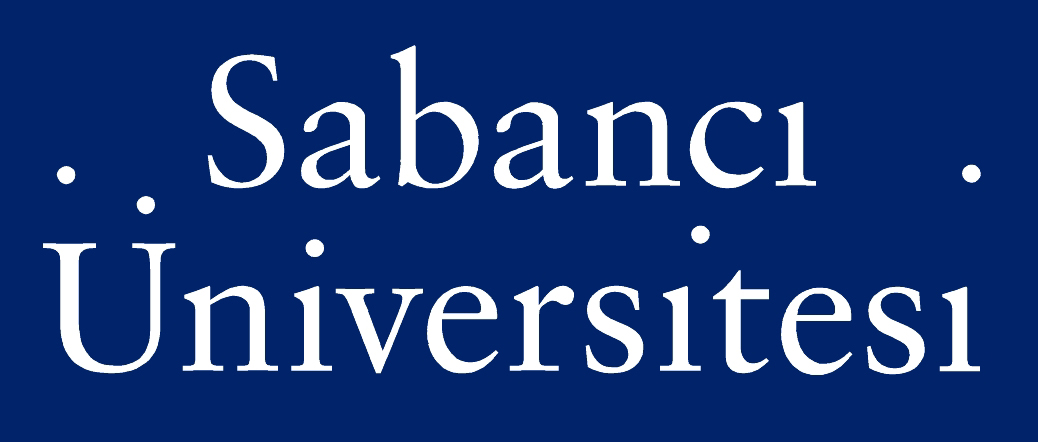


萨班哲中央清真寺(土耳其語:Sabancı Merkez Camii)位于土耳其阿达纳,是土耳其第二大清真寺[2]。这座清真寺的外观和内部装饰类似于埃迪尔内的塞利米耶清真寺,但是拥有6个叫拜楼,又类似于伊斯坦布尔的苏丹艾哈迈德清真寺(蓝色清真寺)。
这座清真寺于1998年投入使用,是在没收的亚美尼亚公墓原址上建造的。[3][4][5]占地总面积52600平方米。[6]
萨班哲中央清真寺是由土耳其宗教基金会和萨班哲基金会共同建造。清真寺的所有权属于阿达纳宗教事务基金会,其使用权已移交给阿达纳省穆夫提办事处。
Die Sabancı-Zentralmoschee (türkisch Sabancı Merkez Camii) in Adana ist die zweitgrößte Moschee in der Türkei und eine der größten der Welt. Sie wurde im Jahr 1998 eröffnet, Architekt war Necip Dinç.
Die Moschee besitzt sechs Minarette, von denen die vorderen vier (um die Zentralkuppel herum platziert) eine Höhe von 99 Metern aufweisen, die zwei hinteren sind 75 Meter hoch. Die größte der fünf Kuppeln hat einen Durchmesser von 32 Metern und eine Höhe von 54 Meter.
Von außen erinnert diese Moschee an die Sultan-Ahmed-Moschee („Blaue Moschee“) und an die Hagia Sophia in Istanbul. Die Innenarchitektur erinnert an die Selimiye-Moschee in Edirne.
Finanziert wurde der Bau zu 50 % durch Spenden der Bevölkerung und zu 50 % durch die Industriellenfamilie Sabancı.

Die Selahaddin Eyyubi Moschee ist eine historische Moschee in Schanliurfa (Şanlıurfa).
Das Gebäude war einstmals die Kirche Saint Johannes Prodromos Addai und befindet sich in der Vali Fuat Bey Caddesi. Es wird angenommen, dass das Gebäude 457 n.Chr. von Bischof Nona erbaut worden ist. Das auch als Kathedrale bezeichnete Gebäude war Jahrhunderte lang die größte Kirche der Region. Das Gebäude lag viele Jahre in Trümmern und wurde im frühen 19. Jh. zu einer Moschee gewandelt, die dann allerdings auch baufällig wurde. Das Gebäude wurde zwischenzeitlich als Elektrozentrale genutzt.
Auf dessen Ruinen wurde im 20. Jh. n.Chr. wiederum eine Moschee gebaut und am 28. Mai 1993 eröffnet. Die Moschee wurde Sultan Saladin gewidmet.





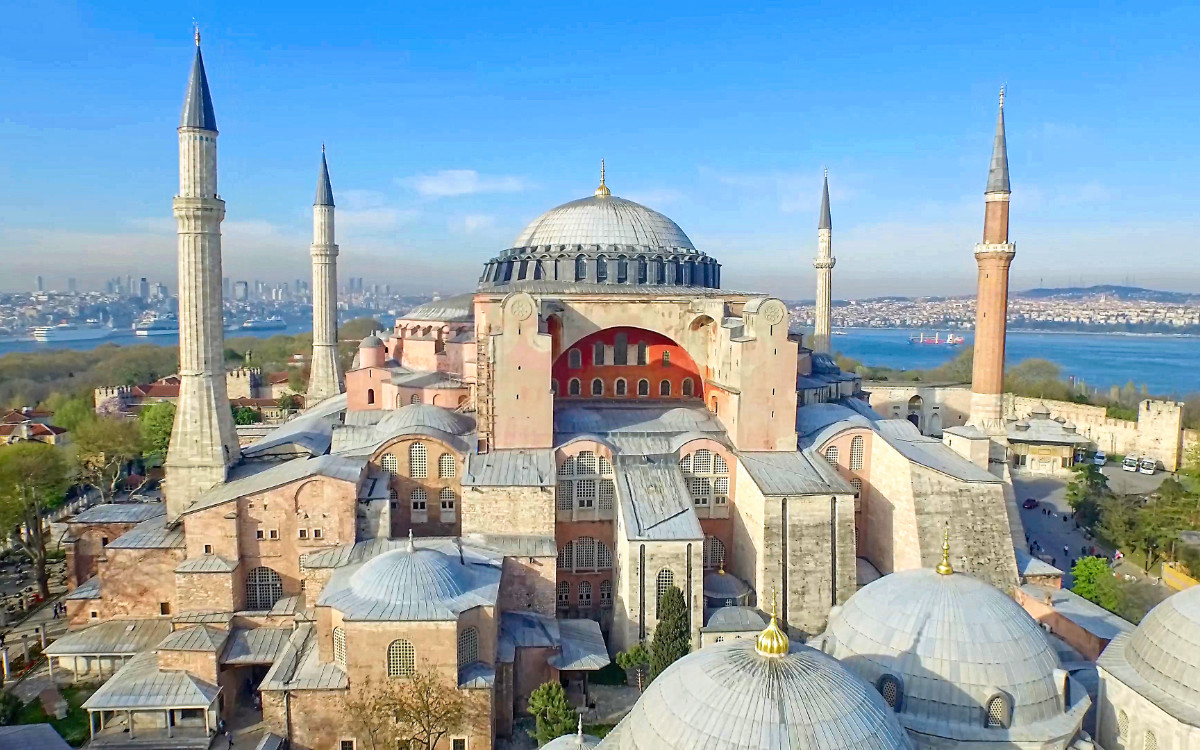

Die Hagia Sophia (vom griechischen Ἁγία Σοφία „heilige Weisheit“; türkisch Ayasofya) oder Sophienkirche ist eine ehemalige byzantinische Kirche, die später eine Moschee wurde und heute als Museum (Ayasofya Müzesi, „Hagia-Sophia-Museum“) genutzt wird. Sie befindet sich in Eminönü, einem Stadtteil im europäischen Teil Istanbuls. Nach dem Niederbrennen zweier Vorläuferbauten verfolgte Kaiser Justinian mit dem Bau einer Kuppelbasilika im 6. Jahrhundert n. Chr. ein besonders ambitioniertes baupolitisches Programm. Sie ist dabei nicht nur die letzte der spätantiken Großkirchen, die seit Konstantin dem Großen im Römischen Reich errichtet wurden, sondern gilt in ihrer architektonischen Einzigartigkeit oft als eine Kirche ohne Vorbilder und ohne Nachahmung.[1] Die Kuppel der Hagia Sophia bleibt mit 32 Metern Spannweite bis zum heutigen Tage die größte über nur vier Tragepunkten errichtete Kuppel der Architekturgeschichte und gilt mit der gigantischen Umsetzung und ihrer besonderen Harmonie und Proportionen als eines der bedeutendsten Gebäude aller Zeiten.[2][3] Als letztes großes und bei Weitem bedeutendstes Bauwerk der frühbyzantinischen Architektur und Kunst der Spätantike[4] brachte sie zugleich ein neues Paradigma des Kirchenbaus hervor, das teils im Gegensatz zu seinen älteren Vorläufern stand und in der Folge einen der Grundpfeiler der christlichen Baukunst bilden sollte, der die Sakralarchitektur in Ost und West nachhaltig beeinflusst hat.[5][2] Die Hagia Sophia war die Kathedrale Konstantinopels, Hauptkirche des Byzantinischen Reiches sowie religiöser Mittelpunkt der Orthodoxie und ist heute ein Wahrzeichen Istanbuls.
Als Krönungskirche der byzantinischen Kaiser (seit 641), als Kathedrale des Ökumenischen Patriarchats von Konstantinopel und Ort wichtiger historischer Geschehnisse ist die Hagia Sophia in besonderer Weise mit der byzantinischen Geschichte sowie allgemein als universell gedachte Modellkirche der Hauptstadt der christlichen Oikumene, Konstantinopel, mit der Ideengeschichte des Christentums verbunden.[6] Geplant als Bau von universeller Bedeutung, blieb sie über die Zeit des Mittelalters auch ein universelles christlich-spirituelles Zentrum. Auf der rechten Seite des Naos symbolisiert das Omphalion daher auch die Mitte der Erde, den sprichwörtlichen „Nabel der Welt“. Ihr Bau und ihre Symbolkraft waren aber insbesondere für die orthodoxe Christenheit und das Reich von außerordentlicher Bedeutung. Daher gilt sie den meisten orthodoxen Christen noch heute als großes Heiligtum.
Nach der Eroberung Konstantinopels durch die Osmanen im Jahr 1453 wurden christliche Insignien, Inneneinrichtung, Dekorationen und Glocken der Hagia Sophia entfernt oder durch Putz verdeckt. Nachdem die Hagia Sophia anschließend als Hauptmoschee der Osmanen adaptiert worden war, stellten sich die Sultane des 16. und 17. Jahrhunderts mit bedeutenden architektonischen Rezeptionen der Hagia Sophia in die byzantinische Tradition; die berühmteste Rezeption ist die Sultan-Ahmed- oder Blaue Moschee; in jüngster Zeit ist die neue Sabancı-Zentralmoschee von Adana zu nennen. Mithin geht die heute geläufigste Bauform der Moschee als Zentralkuppelbau letztlich auf die Hagia Sophia zurück, während in den ersten Jahrhunderten der islamischen Geschichte noch der Typus der Pfeilerhallenmoschee (wie z. B. die ehemalige Hauptmoschee von Córdoba oder die Umayyaden-Moschee) dominiert hatte, wobei letztere ursprünglich als Basilika errichtet und erst später in eine Moschee umgewandelt wurde. Allgemein ist die Hagia Sophia trotz der islamischen Indienstnahme unter den bedeutenden frühchristlichen Sakralgebäuden in rein architektonischer Perspektive heute weniger verändert überliefert, als es die großen frühchristlichen Basiliken Roms und Jerusalems sind.[7]
圣索菲亚大教堂(希腊语:Ἁγία Σοφία;拉丁语:Sancta Sapientia;土耳其语:Ayasofya)是位于现今土耳其伊斯坦布尔的宗教建筑,有近一千五百年的漫长历史,因其巨大的圆顶而闻名于世,是一幢“改变了建筑史”的拜占庭式建筑典范[1]。
索菲亚在希腊语里的意思是神圣智慧[2]。其拉丁语名称则为Sancta Sophia,希腊语全名是“Ναός τῆς Ἁγίας τοῦ Θεοῦ Σοφίας”,解作“上帝圣智教堂”,教堂供奉在正教神学里的耶稣[3][4]。大教堂称为“圣索菲亚”(Ἁγία Σοφία),是特别献给天主圣智的那一位,即圣三中的圣言。这种对耶稣的称呼可能源自保禄(保罗)对基督的描绘,格前1:24 “基督却是天主的德能和天主的圣智(Σοφία)”。
在该教堂伫立的地点曾经存在过两座被暴乱摧毁的教堂,公元532年拜占庭皇帝查士丁尼一世下令建造第三所教堂[5]。在拜占庭雄厚的国力支持之下,由物理学家米利都的伊西多尔(Isidore of Miletus)及数学家特拉勒斯的安提莫斯设计的这所教堂在公元537年便完成了其建造[6]。刚竣工时的圣索菲亚大教堂是正教会牧首巴西利卡形制的大教堂,在1519年被塞维利亚主教座堂取代之前圣索菲亚大教堂一直是世界上最大的教堂[7]。圣索菲亚大教堂由360年落成直至1453年期间都是君士坦丁堡的大教堂[8]
奥斯曼土耳其人在1453年征服君士坦丁堡,苏丹穆罕默德二世下令将大教堂转变为清真寺[9],还将钟铃、祭坛、圣幛、祭典用的器皿移去,用灰泥覆盖基督教镶嵌画[10]。日后又逐渐加上了一些伊斯兰建筑,如米哈拉布、敏拜尔及外面的四座叫拜楼。
随着土耳其共和国的建立,1934年该教堂失去了其宗教意义。1935年2月1日,这座见证了数个帝国兴盛衰亡的建筑以博物馆的身份重新对世人开放[11]。
大教堂藏有大量圣物,当中以一个15米(49英尺)高的银圣幛最具特色,圣索菲亚大教堂是君士坦丁堡牧首的圣座,在将近千年的时间里都是正教会的焦点。1054年,枢机宏伯特到圣索菲亚大教堂的祭坛将牧首米恰尔一世·色路拉里乌逐出教会[12],该事件被视为东西教会分裂的开端。
作为接近500年来伊斯坦布尔最重要的清真寺,圣索菲亚大教堂是众多奥斯曼帝国时期清真寺如苏丹艾哈迈德清真寺(蓝色清真寺)、塞札特清真寺、苏莱曼尼耶清真寺、鲁斯坦帕夏清真寺、奇力克阿里帕夏清真寺的模范。
アヤソフィア(トルコ語:Ayasofya、古典ギリシア語:Ἁγία Σοφία (Hagia Sophiā)、現代ギリシア語:Αγία Σοφία (Aagia Sophia))は、トルコのイスタンブールにある博物館[1]。東ローマ帝国(ビザンツ帝国・ビザンティン帝国)時代に正統派キリスト教の大聖堂としての建設を起源とし、帝国第一の格式を誇る教会、コンスタンティノープル総主教座の所在地であった[2]が、1204年から1261年まではラテン帝国支配下においてローマ・カトリックの教徒大聖堂とされていた。その後は1453年5月29日から1931年までの長期間にわたりモスクとして改築を繰り返し使用されて現在の特徴的な姿となり[3]、後に世俗化された。1935年2月1日から博物館 (トルコ語: Ayasofya Müzesi) として使われている[4]。
東ローマ帝国の代表的な遺構であり、しばしばビザンティン建築の最高傑作と評価される。その歴史と威容から、オスマン帝国の時代においても第一級の格式を誇るモスクとして利用された。日本語では慣用的に「ハギア・ソフィア」と呼称されるが、厳密にはトルコ語読みは「アヤソフャ」、古典ギリシア語読みは「ハギア・ソピアー」、現代ギリシア語読みでは「アギア・ソフィア」に近い。正教会では「アギア・ソフィア大聖堂」と呼ばれ、「ハギア・ソフィア大聖堂」と表記されることも多い。
Hagia Sophia (/ˈhɑːɡiə soʊˈfiːə/; from the Greek Αγία Σοφία, pronounced [aˈʝia soˈfia], "Holy Wisdom"; Latin: Sancta Sophia or Sancta Sapientia; Turkish: Ayasofya) is the former Greek Orthodox Catholic patriarchal cathedral, later an Ottoman imperial mosque and now a museum (Ayasofya Müzesi) in Istanbul, Turkey. Built in 537 AD at the beginning of the Middle Ages, it was famous in particular for its massive dome. It was the world's largest building and an engineering marvel of its time. It is considered the epitome of Byzantine architecture[1] and is said to have "changed the history of architecture".[2]
From the date of its construction in 537 until 1453, it served as an Eastern Orthodox cathedral and the seat of the Ecumenical Patriarch of Constantinople,[3] except between 1204 and 1261, when it was converted by the Fourth Crusaders to a Roman Catholic cathedral under the Latin Empire. The building was later converted into an Ottoman mosque from 29 May 1453 until 1931. It was then secularized and opened as a museum on 1 February 1935.[4] It remained the world's largest cathedral for nearly a thousand years, until Seville Cathedral was completed in 1520.
The current building was originally constructed as a church between 532 and 537 on the orders of the Byzantine Emperor Justinian I and was the third Church of the Holy Wisdom to occupy the site, the prior one having been destroyed by rioters in the Nika Revolt. It was designed by the Greek geometers Isidore of Miletus and Anthemius of Tralles.[5] The church was dedicated to the Wisdom of God, the Logos, the second person of the Trinity,[6] its patronal feast taking place on 25 December, the commemoration of the birth of the incarnation of the Logos in Christ.[6] Although sometimes referred to as Sancta Sophia (as though it were named after Sophia the Martyr), sophia being the phonetic spelling in Latin of the Greek word for wisdom, its full name in Greek is Ναός της Αγίας του Θεού Σοφίας, Naos tēs Hagias tou Theou Sophias, "Shrine of the Holy Wisdom of God".[7][8] The church contained a large collection of relics and featured, among other things, a 15-metre (49 ft) silver iconostasis.[citation needed] The focal point of the Eastern Orthodox Church for nearly one thousand years, the building witnessed the excommunication of Patriarch Michael I Cerularius officially communicated by Humbert of Silva Candida, the papal envoy of Pope Leo IX in 1054, an act that is commonly considered the start of the East–West Schism.
In 1453, Constantinople was conquered by the Ottoman Empire under Mehmed the Conqueror, who ordered this main church of Orthodox Christianity converted into a mosque. Although some parts of the city of Constantinople were falling into disrepair, the cathedral was maintained with an amount of money set aside for this purpose. Nevertheless, the Christian cathedral made a strong impression on the new Ottoman rulers and they decided to convert it into a mosque.[9][10] The bells, altar, iconostasis, and other relics were destroyed and the mosaics depicting Jesus, his Mother Mary, Christian saints, and angels were also destroyed or plastered over. Islamic features—such as the mihrab (a niche in the wall indicating the direction toward Mecca, for prayer), minbar (pulpit), and four minarets—were added. It remained a mosque until 1931 when it was closed to the public for four years. It was re-opened in 1935 as a museum by the Republic of Turkey. Hagia Sophia was, as of 2014, the second-most visited museum in Turkey, attracting almost 3.3 million visitors annually.[11] According to data released by the Turkish Culture and Tourism Ministry, Hagia Sophia was Turkey's most visited tourist attraction in 2015.[12]
From its initial conversion until the construction of the nearby Sultan Ahmed Mosque (Blue Mosque of Istanbul) in 1616, it was the principal mosque of Istanbul. The Byzantine architecture of the Hagia Sophia served as inspiration for many other Ottoman mosques, such as the aforementioned mosque, the Şehzade Mosque, the Süleymaniye Mosque, the Rüstem Pasha Mosque and the Kılıç Ali Pasha Complex.
La basilique Sainte-Sophie (du grec Ἁγία Σοφία / Hagía Sophía, qui signifie « sagesse de Dieu », « sagesse divine », nom repris en turc sous la forme Ayasofya) est une grande basilique chrétienne de Constantinople construite dans un premier temps au IVe siècle, puis reconstruite bien plus grande au VIe siècle, sous l'empereur byzantin Justinien, où elle a acquis sa forme actuelle. Elle est devenue mosquée au XVe siècle sous Mehmet II. Elle est située sur la péninsule historique d'Istanbul. Depuis 1934, elle n'est plus un lieu de culte mais un musée. Son esplanade est à la mesure de la gloire de Byzance. Souvent surnommée la Grande Église, la basilique est dédiée au Christ, « sagesse de Dieu », selon la tradition théologique chrétienne. La dédicace du sanctuaire est célébrée le 25 décembre.
Santa Sofia (in turco: Ayasofya; in greco: Αγία Σοφία, Agia Sofia) è uno dei principali monumenti di Istanbul.
Dedicato alla Sophia (la sapienza di Dio), dal 537 al 1453 l'edificio fu cattedrale ortodossa e sede del Patriarcato di Costantinopoli, a eccezione di un breve periodo tra il 1204 e il 1261, quando fu convertito dai crociati a cattedrale cattolica di rito romano sotto l'Impero latino di Costantinopoli.
Divenne poi moschea ottomana il 29 maggio 1453 e tale rimase fino al 1931. Fu poi sconsacrato e il 1º febbraio 1935 divenne un museo.
Santa Madre Sofía o Hagia Sophia (del griego: Άγια Σοφία, «Santa Sabiduría»; en latín: Sancta Sophia o Sancta Sapientia; en turco: Ayasofya) es una antigua basílica patriarcal ortodoxa, posteriormente convertida en mezquita y actualmente en museo, en la ciudad de Estambul, Turquía.1
Desde la fecha de su dedicación en el año 360 y hasta 1453 sirvió como la catedral ortodoxa bizantina de rito oriental de Constantinopla, excepto en el paréntesis entre 1204 y 1261 en que fue reconvertida en catedral católica de rito latino, durante el patriarcado latino de Constantinopla del Imperio latino, fundado por los cruzados. Tras la Conquista de Constantinopla por el Imperio otomano, el edificio fue transformado en mezquita, manteniendo esta función desde el 29 de mayo de 1453 hasta 1931, fecha en que fue secularizado. El 1 de febrero de 1935 fue inaugurado como museo.
A veces llamada Sancta Sophia (como si fuera el nombre de Santa Sofía), sophia es en realidad la transcripción fonética al latín de la palabra griega "sabiduría" —el nombre completo en griego es Ναός τῆς Ἁγίας τοῦ Θεοῦ Σοφίας: «Iglesia de la Santa Sabiduría de Dios»—.23
El templo estaba dedicado a la Divina Sabiduría, una imagen tomada del Libro de la Sabiduría del Antiguo Testamento y que hace referencia a la personificación de la sabiduría de Dios o segunda persona de la Santísima Trinidad. Su fiesta se celebra el 25 de diciembre, el aniversario de la encarnación del Verbo o Logos en Cristo.4
Famosa por su enorme cúpula, está considerada como el epítome de la arquitectura bizantina, y se dice de ella que «cambió la historia de la arquitectura».5 Fue la catedral con mayor superficie del mundo durante casi mil años, hasta que se completó la obra de la catedral de Sevilla en 1520. El edificio actual fue reconstruido entre 532 y 537 para ser usado como iglesia, por orden del emperador bizantino Justiniano I, siendo la tercera iglesia de la Santa Sabiduría edificada en ese mismo emplazamiento. El diseño es obra del arquitecto y físico jonio Isidoro de Mileto y del matemático y arquitecto lidio Antemio de Tralles.
La iglesia contiene una gran colección de reliquias de santos, y contó con un iconostasio de plata de 15 metros. Fue la sede del Patriarca de Constantinopla y el punto focal religioso de la Iglesia ortodoxa oriental por casi mil años. En esta iglesia el cardenal Humberto excomulgó a Miguel I Cerulario en 1054; acto que comúnmente se considera como el comienzo del Gran Cisma.
En 1453 Constantinopla fue conquistada por los turcos otomanos bajo las órdenes del sultán Mehmed II, quien posteriormente decidió que el templo se convirtiera en mezquita.6 Las campanas, el altar, el iconostasio y los vasos de sacrificio fueron retirados, y muchos de los mosaicos fueron enlucidos. Durante el dominio otomano se le añadieron detalles arquitectónicos islámicos, como el mihrab, el minbar y cuatro minaretes. El edificio se mantuvo como mezquita hasta 1931, fecha en que fue cerrado al público por el gobierno de Turquía hasta su reapertura, ya como museo, en 1935.
Mezquita principal de Estambul durante casi 500 años, Santa Sofía sirvió como modelo para muchas otras mezquitas otomanas, como la mezquita del Sultán Ahmed —también conocida como la Mezquita Azul de Estambul—, la Mezquita Sehzade, la mezquita de Solimán, la mezquita Rüstem Pasha y la mezquita Kiliç Ali Pasha.
Собо́р Свято́й Софи́и — Прему́дрости Бо́жией[1], Святая София Константинопольская, Айя-София (греч. Ἁγία Σοφία, полностью: Ναός τῆς Ἁγίας τοῦ Θεοῦ Σοφίας; тур. Ayasofya) — бывший патриарший православный собор, впоследствии — мечеть, ныне — музей; всемирно известный памятник византийского зодчества, символ «золотого века» Византии. Официальное название памятника на сегодняшний день Музей Айя-София (тур. Ayasofya Müzesi).
Во времена Византийской империи собор находился в центре Константинополя рядом с императорским дворцом. В настоящее время находится в историческом центре Стамбула, район Султанахмет. В 1453 году после захвата города османами Софийский собор был обращён в мечеть, а в 1935 году он приобрёл статус музея. В 1985 году Софийский собор в числе других памятников исторического центра Стамбула был включён в состав Всемирного наследия ЮНЕСКО[2].
Более тысячи лет Софийский собор в Константинополе оставался самым большим храмом в христианском мире — вплоть до постройки собора Святого Петра в Риме. Высота Софийского собора — 55,6 метров, диаметр купола 31 метр.

Das Zafer Anıtı (Siegesdenkmal) in Ankara, früher auch hakimiyet-i milliye genannt, steht am Ulus-Platz.
Nach einer Kampagne der Tageszeitung Yenigün zur Errichtung eines Denkmales für die Helden im Türkischen Befreiungskrieg schrieb die türkische Regierung einen internationalen Wettbewerb für die Gestaltung des Denkmales aus. Der österreichische Künstler Heinrich Krippel bekam 1925 den Auftrag für das Denkmal. Krippel ließ das Denkmal in den Vereinigten Metallwerken (Wien) gießen. Am 24. November 1927 wurde das Denkmal auf dem Ulus-Platz von Kazim Özalp in Anwesenheit von Ismet Inönü enthüllt. Die Statue wurde mit von Yunus Nadi Abalıoğlu gesammelten Spenden finanziert.
安卡拉的 Zafer Anıtı(胜利纪念碑)原名 hakimiyet-i milliye,位于乌卢斯广场。
 Argentinien
Argentinien
 China
China

 Essen und Trinken
Essen und Trinken
 *Teesorten,Teeanbaugebiete,Teezeremonie,Teekultur
*Teesorten,Teeanbaugebiete,Teezeremonie,Teekultur
 Indien
Indien
 Indonesien
Indonesien
 Iran
Iran
 Japan
Japan
 Kenia
Kenia
 Sri Lanka
Sri Lanka
 Türkei
Türkei
 Vietnam
Vietnam
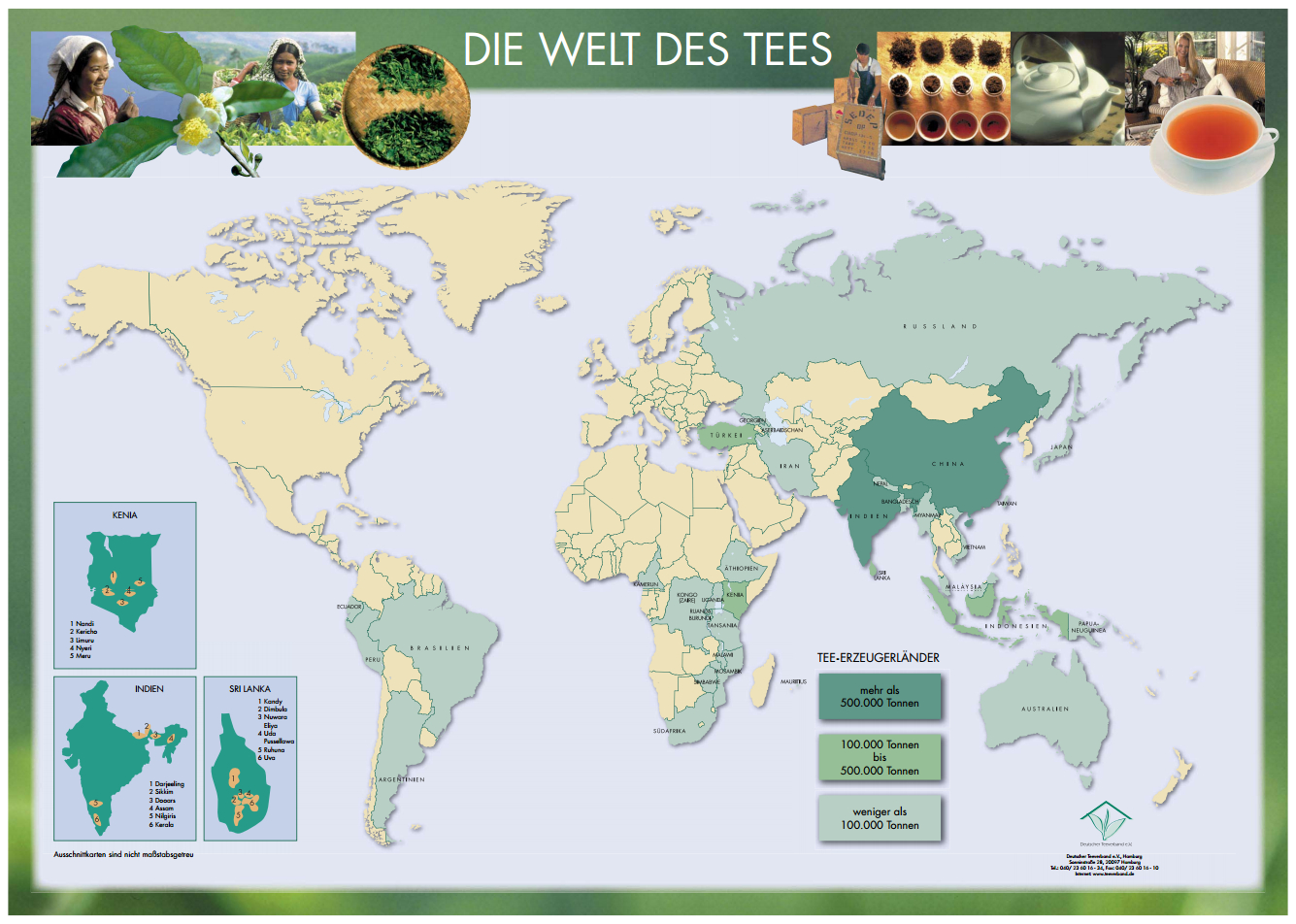

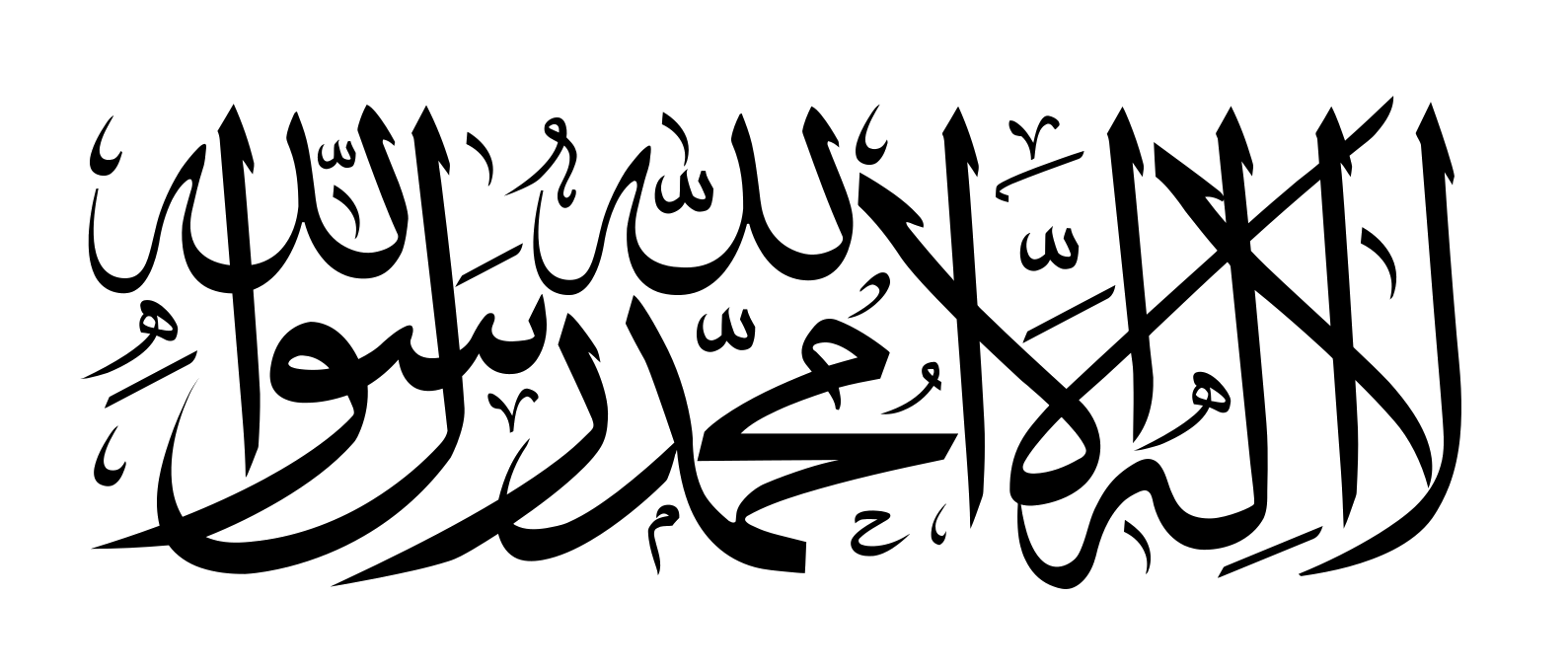 Afghanistan
Afghanistan
 Ägypten
Ägypten
 Albanien
Albanien
 Angola
Angola
 Antigua und Barbuda
Antigua und Barbuda
 Argentinien
Argentinien
 Armenien
Armenien
 Australien
Australien
 Bahrain
Bahrain
 Bangladesh
Bangladesh
 Barbados
Barbados
 Belgien
Belgien
 Belize
Belize
 Benin
Benin
 Bolivien
Bolivien
 Botsuana
Botsuana
 Brasilien
Brasilien
 Brunei Darussalam
Brunei Darussalam
 Bulgarien
Bulgarien
 Burkina Faso
Burkina Faso
 Burundi
Burundi
 Chile
Chile
 China
China
 Columbia
Columbia
 Costa Rica
Costa Rica
 Côte d´Ivoire
Côte d´Ivoire
 Cuba
Cuba
 Dänemark
Dänemark
 Demokratische Republik Kongo
Demokratische Republik Kongo
 Deutschland
Deutschland
 Dominica
Dominica
 Dominikanische Republik
Dominikanische Republik
 Dschibuti
Dschibuti
 Ecuador
Ecuador
 Estland
Estland

 Europäische Union
Europäische Union
 Fidschi
Fidschi

 Finanz
Finanz
 Finnland
Finnland
 Frankreich
Frankreich
 Gabun
Gabun
 Gambia
Gambia
 Georgien
Georgien
 Ghana
Ghana
 Grenada
Grenada
 Griechenland
Griechenland
 Guatemala
Guatemala
 Guinea
Guinea
 Guinea-Bissau
Guinea-Bissau
 Guyana
Guyana
 Honduras
Honduras
 Hongkong Tebiexingzhengqu-HK
Hongkong Tebiexingzhengqu-HK
 Indien
Indien
 Indonesien
Indonesien
 Irland
Irland
 Island
Island
 Israel
Israel
 Italien
Italien
 Jamaika
Jamaika
 Japan
Japan
 Jemen
Jemen
 Jordanien
Jordanien
 Kambodscha
Kambodscha
 Kamerun
Kamerun
 Kanada
Kanada
 Kap Verde
Kap Verde
 Kasachstan
Kasachstan
 Katar
Katar
 Kenia
Kenia
 Kirgisistan
Kirgisistan
 Kroatien
Kroatien
 Kuwait
Kuwait
 Laos
Laos
 Lesotho
Lesotho
 Lettland
Lettland
 Liberia
Liberia
 Liechtenstein
Liechtenstein
 Litauen
Litauen
 Luxemburg
Luxemburg
 Macau Tebiexingzhengqu-MO
Macau Tebiexingzhengqu-MO
 Madagaskar
Madagaskar
 Malawi
Malawi
 Malta
Malta
 Marokko
Marokko
 Mauretanien
Mauretanien
 Mauritius
Mauritius
 Mexiko
Mexiko
 Moldawien
Moldawien

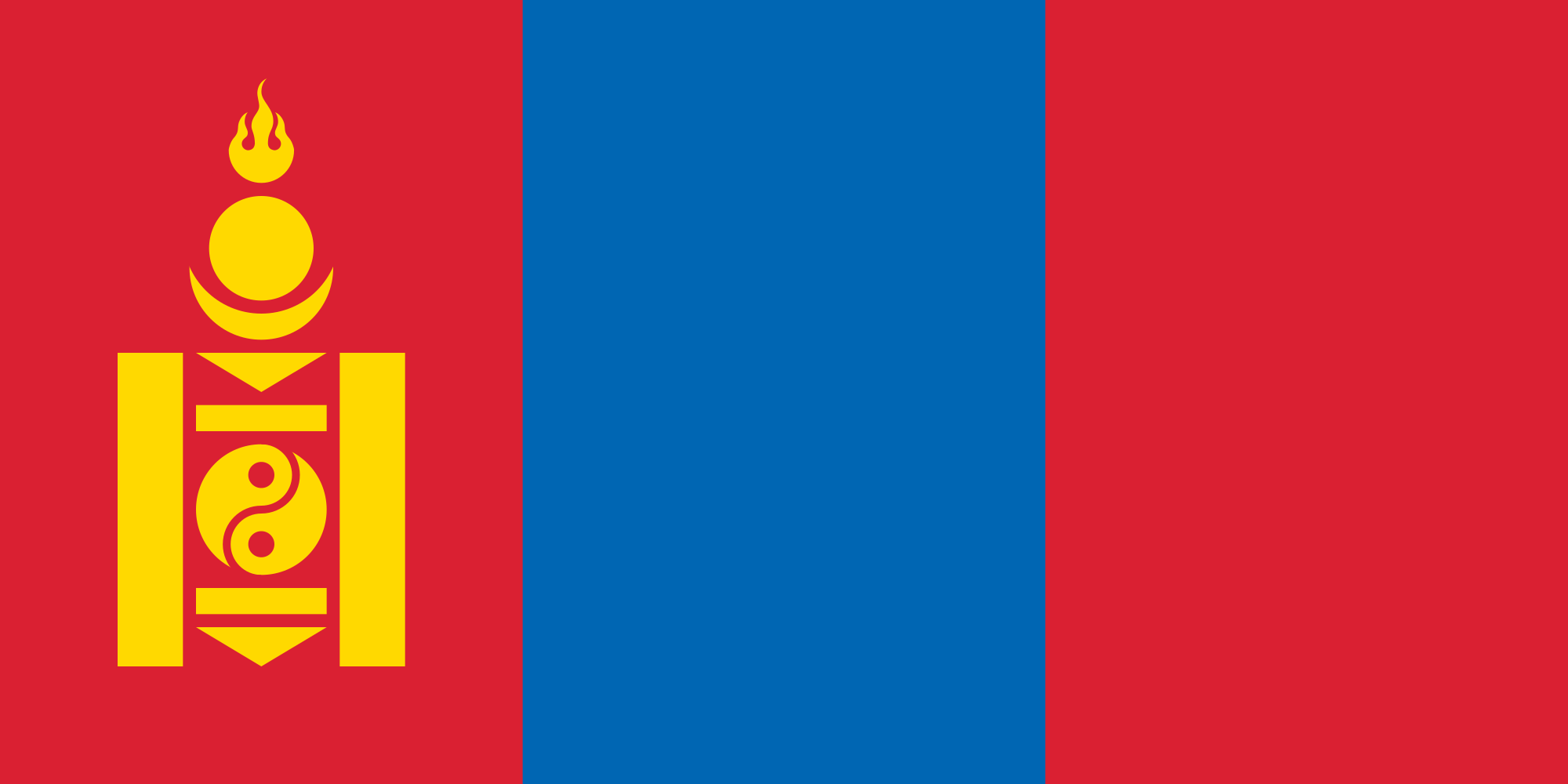 Mongolei
Mongolei
 Montenegro
Montenegro
 Mosambik
Mosambik
 Myanmar
Myanmar
 Namibia
Namibia
 Nepal
Nepal
 Neuseeland
Neuseeland
 Nicaragua
Nicaragua
 Niederlande
Niederlande
 Niger
Niger
 Nigeria
Nigeria
 Nordmazedonien
Nordmazedonien
 Norwegen
Norwegen
 Oman
Oman
 Österreich
Österreich
 Pakistan
Pakistan
 Panama
Panama
 Papua-Neuguinea
Papua-Neuguinea
 Paraguay
Paraguay
 Peru
Peru
 Philippinen
Philippinen
 Polen
Polen
 Portugal
Portugal
 Republik El Salvador
Republik El Salvador
 Republik Haiti
Republik Haiti
 Republik Kongo
Republik Kongo
 Republik Korea
Republik Korea
 Ruanda
Ruanda
 Rumänien
Rumänien
 Russland
Russland
 Salomonen
Salomonen
 Sambia
Sambia
 Samoa
Samoa
 Saudi-Arabien
Saudi-Arabien
 Schweden
Schweden
 Schweden
Schweden
 Schweiz
Schweiz
 Genf
Genf
 Senegal
Senegal
 Seychellen
Seychellen
 Sierra Leone
Sierra Leone
 Simbabwe
Simbabwe
 Singapur
Singapur
 Slowakei
Slowakei
 Slowakei
Slowakei
 Slowenien
Slowenien
 Slowenien
Slowenien
 Spanien
Spanien
 Sri Lanka
Sri Lanka
 St. Kitts und Nevis
St. Kitts und Nevis
 St. Lucia
St. Lucia
 St. Vincent und die Grenadinen
St. Vincent und die Grenadinen
 Südafrika
Südafrika
 Suriname
Suriname
 Swasiland
Swasiland
 Tadschikistan
Tadschikistan
 Taiwan Sheng-TW
Taiwan Sheng-TW
 Tansania
Tansania
 Thailand
Thailand
 Togo
Togo
 Tonga
Tonga
 Trinidad und Tobago
Trinidad und Tobago
 Tschad
Tschad
 Tschechien
Tschechien
 Tunesien
Tunesien
 Türkei
Türkei
 Uganda
Uganda
 Ukraine
Ukraine
 Ungarn
Ungarn
 Uruguay
Uruguay
 Vanuatu
Vanuatu
 Venezuela
Venezuela
 Vereinigte Arabische Emirate
Vereinigte Arabische Emirate
 Vereinigte Staaten
Vereinigte Staaten
 Vereinigtes Königreich
Vereinigtes Königreich
 Vietnam
Vietnam

 Wichtige internationale Organisationen
Wichtige internationale Organisationen
 World Trade Organization
World Trade Organization
 Roberto Azevêdo
Roberto Azevêdo
 World Trade Organization
World Trade Organization
 Mike Moore
Mike Moore
 World Trade Organization
World Trade Organization
 Ngozi Okonjo-Iweala
Ngozi Okonjo-Iweala
 World Trade Organization
World Trade Organization
 Pascal Lamy
Pascal Lamy
 World Trade Organization
World Trade Organization
 Peter Sutherland
Peter Sutherland
 World Trade Organization
World Trade Organization
 Renato Ruggiero
Renato Ruggiero
 World Trade Organization
World Trade Organization
 Supachai Panitchpakdi
Supachai Panitchpakdi
 Zentralafrikanische Republik
Zentralafrikanische Republik
 Zypern
Zypern


世界贸易组织(简称世贸组织或世贸;英语:World Trade Organization,缩写为 WTO;法语:Organisation Mondiale du Commerce,缩写为 OMC;西班牙语:Organización Mundial del Comercio,缩写为 OMC)是负责监督成员经济体之间各种贸易协议得到执行的一个国际组织,前身是1948年起实施的关税及贸易总协定的秘书处。
世贸总部位于瑞士日内瓦,现任总干事是罗伯托·阿泽维多。截至2016年7月29日,世界贸易组织共有164个成员。[5]世界贸易组织的职能是调解纷争,加入WTO不算签订一种多边贸易协议,但其设置的入会门槛可以做为愿意降低关税、法政上配合、参与国际贸易的门票,它是贸易体制的组织基础和法律基础,是众多贸易协定的管理者,是各成员贸易立法的监督者,是就贸易提供解决争端和进行谈判的场所。该机构是当代最重要的国际经济组织之一,其成员间的贸易额占世界贸易额的绝大多数,被称为“经济联合国”。
世界貿易機関(せかいぼうえききかん、英: World Trade Organization、略称:WTO)は、自由貿易促進を主たる目的として創設された国際機関である。常設事務局がスイスのジュネーブに置かれている。
GATT(ガット)ウルグアイ・ラウンドにおける合意によって、世界貿易機関を設立するマラケシュ協定(WTO設立協定)に基づいて1995年1月1日にGATTを発展解消させて成立した。
本来GATTは、第二次世界大戦後の安定を見据え、国際通貨基金および国際復興開発銀行とともに設立が予定されていた国際貿易機関(ITO)の設立準備の際に、暫定協定として結ばれたものであった。国際貿易機関の設立が廃案となり、GATTがその代替として発展強化されていくうちに、再びこの分野の常設機関が求められ、WTOが設立されることとなった。発展解消であるため、GATTの事務局及び事務局長もWTOへと引き継がれることとなった[4]。
WTOはGATTを継承したものであるが、GATTが協定(Agreement)に留まったのに対し、WTOは機関(Organization)であるのが根本的な違いである。
を基本原則としている。また、物品貿易だけでなく金融、情報通信、知的財産権やサービス貿易も含めた包括的な国際通商ルールを協議する場である。
対抗処置の発動では、紛争処理機関(パネル)の提訴に対し全加盟国による反対がなければ採択されるというネガティブ・コンセンサス方式(逆コンセンサス方式)を採用した強力な紛争処理能力を持つ。これは国際組織としては稀な例であり、コンセンサス方式を採っていたGATTとの大きな違いで、WTOの特徴の一つといえる。
新多角的貿易交渉(新ラウンド)は、2001年11月にカタールのドーハで行われた第4回WTO閣僚会議で開始を決定し、ドーハ・ラウンドと呼ばれていた。2002年2月1日の貿易交渉委員会で新ラウンドがスタートした。しかし9年に及ぶ交渉は先進国と、急速に台頭してきたBRICsなど新興国との対立によって中断と再開を繰り返した末、ジュネーブで行われた第4回WTO閣僚会議(2011年12月17日)で「交渉を継続していくことを確認するものの、近い将来の妥結を断念する」(議長総括)となり事実上停止状態になった。
その後、2013年のバリ島における閣僚会議で、貿易円滑化協定を含む合意が成立し、2014年7月まで貿易円滑化協定をWTO協定に加える(附属書1Aに追加)するための文書を一般理事会で採択すべきとされた[5]。しかしインドが合意を蒸し返す状態で反対したため期限までに採択できなかった[6]。その後食糧備蓄への補助金の問題で先進国側が譲歩することでようやくインドが合意し、2014年11月27日の一般理事会で貿易円滑化協定が採択された[6]。WTO加盟国の3分の2が改正を受諾した日に発効することになっており、2017年2月22日にこの要件を満たし、協定が発効した。
The World Trade Organization (WTO) is an intergovernmental organization that regulates international trade. The WTO officially commenced on 1 January 1995 under the Marrakesh Agreement, signed by 124 nations on 15 April 1994, replacing the General Agreement on Tariffs and Trade (GATT), which commenced in 1948. It is the largest international economic organization in the world.[5][6]
The WTO deals with regulation of trade in goods, services and intellectual property between participating countries by providing a framework for negotiating trade agreements and a dispute resolution process aimed at enforcing participants' adherence to WTO agreements, which are signed by representatives of member governments[7]:fol.9–10 and ratified by their parliaments.[8] The WTO prohibits discrimination between trading partners, but provides exceptions for environmental protection, national security, and other important goals.[9] Trade-related disputes are resolved by independent judges at the WTO through a dispute resolution process.[9]
The WTO's current Director-General is Roberto Azevêdo,[10][11] who leads a staff of over 600 people in Geneva, Switzerland.[12] A trade facilitation agreement, part of the Bali Package of decisions, was agreed by all members on 7 December 2013, the first comprehensive agreement in the organization's history.[13][14] On 23 January 2017, the amendment to the WTO Trade Related Aspects of Intellectual Property Rights (TRIPS) Agreement marks the first time since the organization opened in 1995 that WTO accords have been amended, and this change should secure for developing countries a legal pathway to access affordable remedies under WTO rules.[15]
Studies show that the WTO boosted trade,[16][17][9] and that barriers to trade would be higher in the absence of the WTO.[18] The WTO has highly influenced the text of trade agreements, as "nearly all recent [preferential trade agreements (PTAs)] reference the WTO explicitly, often dozens of times across multiple chapters... in many of these same PTAs we find that substantial portions of treaty language—sometime the majority of a chapter—is copied verbatim from a WTO agreement."[19]
L'Organisation mondiale du commerce (OMC ; en anglais : World Trade Organization, WTO, en espagnol : Organización Mundial del Comercio, OMC) est une organisation internationale qui s'occupe des règles régissant le commerce international entre les pays. Au cœur de l'organisation se trouvent les accords de l'OMC, négociés et signés en avril 1994 à Marrakech1 par la majeure partie des puissances commerciales du monde2 et ratifiés par leurs assemblées parlementaires. L'OMC a pour but principal de favoriser l'ouverture commerciale. Pour cela, elle tâche de réduire les obstacles au libre-échange, d'aider les gouvernements à régler leurs différends commerciaux et d'assister les exportateurs, les importateurs et les producteurs de marchandises et de services dans leurs activités.
Depuis 2001, le cycle de négociation mené par l'OMC est le Cycle de Doha3. Bien que l'OMC ne soit pas une agence spécialisée de l'ONU, elle entretient des liens avec cette dernière4. Le siège de l'OMC est au Centre William-Rappard, à Genève. Depuis le 1er septembre 2013, l'organisation est présidée par le Brésilien Roberto Azevêdo qui a été élu directeur général.
L'Organizzazione mondiale del commercio, abbreviato in OMC (in inglese: World Trade Organization, WTO), è un'organizzazione internazionale creata allo scopo di supervisionare numerosi accordi commerciali tra gli stati membri. Vi aderiscono[3] 164 Paesi, a cui se ne aggiungono altri 22 con ruolo di osservatori,[4] comprendendo così oltre il 95% del commercio mondiale di beni e servizi.[5]
La sede dell'OMC si trova, dal 1995, presso il Centro William Rappard a Ginevra, Svizzera.[6]
La Organización Mundial del Comercio (OMC) fue establecida en 1995. Tiene su sede en Ginebra, Suiza, y sus idiomas oficiales son el inglés, el francés y el español. La OMC no forma parte del sistema de las Naciones Unidas, y tampoco de los organismos de Bretton Woods como el Banco Mundial o el FMI.Nota 1
Всеми́рная торго́вая организа́ция (ВТО; англ. World Trade Organization (WTO), фр. Organisation mondiale du commerce (OMC), исп. Organización Mundial del Comercio) — международная организация, созданная 1 января 1995 года с целью либерализации международной торговли и регулирования торгово-политических отношений государств-членов. ВТО образована на основе Генерального соглашения по тарифам и торговле (ГАТТ), заключенного в 1947 году и на протяжении почти 50 лет фактически выполнявшего функции международной организации, но не являвшегося тем не менее международной организацией в юридическом смысле.
ВТО отвечает за разработку и внедрение новых торговых соглашений, а также следит за соблюдением членами организации всех соглашений, подписанных большинством стран мира и ратифицированных их парламентами. ВТО строит свою деятельность, исходя из решений, принятых в 1986—1994 годах в рамках Уругвайского раунда и более ранних договоренностей ГАТТ. Обсуждения проблем и принятие решений по глобальным проблемам либерализации и перспективам дальнейшего развития мировой торговли проходят в рамках многосторонних торговых переговоров (раунды). К настоящему времени проведено 8 раундов таких переговоров, включая Уругвайский, а в 2001 году стартовал девятый в Дохе, Катар. Организация пытается завершить переговоры по Дохийскому раунду переговоров, который был начат с явным акцентом на удовлетворение потребностей развивающихся стран. По состоянию на декабрь 2012 года будущее раунда переговоров в Дохе остаётся неопределённым: программа работы состоит из 21 части, а первоначально установленный окончательный срок 1 января 2005 года был давно пропущен[3]. В ходе переговоров возник конфликт между стремлением к свободной торговле и стремлением множества стран к протекционизму, особенно в плане сельскохозяйственных субсидий. До сих пор эти препятствия остаются главными и мешают любому прогрессу для запуска новых переговоров в рамках Дохийского раунда. По состоянию на июль 2012 года, существуют различные группы переговоров в системе ВТО для решения текущих вопросов в плане сельского хозяйства, что приводит к застою в самих переговорах[4].
Штаб-квартира ВТО расположена в Женеве, Швейцария. Глава ВТО (генеральный директор) — Роберту Карвалью ди Азеведу, в штате самой организации около 600 человек[5].
На 26 апреля 2015 года в ВТО состояли 162 страны[6].
Правила ВТО предусматривают ряд льгот для развивающихся стран. В настоящее время развивающиеся страны — члены ВТО имеют (в среднем) более высокий относительный уровень таможенно-тарифной защиты своих рынков по сравнению с развитыми. Тем не менее, в абсолютном выражении общий размер таможенно-тарифных санкций в развитых странах гораздо выше, вследствие чего доступ на рынки высокопередельной продукции из развивающихся стран серьёзно ограничен[7].
Правила ВТО регулируют только торгово-экономические вопросы. Попытки США и ряда европейских стран начать дискуссию об условиях труда (что позволило бы считать недостаточную законодательную защиту работников конкурентным преимуществом) были отвергнуты из-за протестов развивающихся стран, которые утверждали, что такие меры только ухудшат благосостояние работников в связи с сокращением числа рабочих мест, снижением доходов и уровня конкурентоспособности[7].
Mitglieder der WTO
| Staat | Beitrittsdatum |
|---|---|
| 30. Juni 1995 | |
| 29. Juli 2016 | |
| 8. September 2000 | |
| 23. November 1996 | |
| 1. Januar 1995 | |
| 1. Januar 1995 | |
| 5. Februar 2003 | |
| 1. Januar 1995 | |
| 1. Januar 1995 | |
| 1. Januar 1995 | |
| 1. Januar 1995 | |
| 1. Januar 1995 | |
| 1. Januar 1995 | |
| 22. Februar 1996 | |
| 12. September 1995 | |
| 31. Mai 1995 | |
| 1. Januar 1995 | |
| 1. Januar 1995 | |
| 1. Dezember 1996 | |
| 3. Juni 1995 | |
| 23. Juli 1995 | |
| 1. Januar 1995 | |
| 11. Dezember 2001 | |
| 1. Januar 1995 | |
| 1. Januar 1995 | |
| 1. Januar 1995 | |
| 1. Januar 1995 | |
| 9. März 1995 | |
| 31. Mai 1995 | |
| 21. Januar 1996 | |
| 7. Mai 1995 | |
| 1. Januar 1995 | |
| 13. November 1999 | |
| 1. Januar 1995 | |
| 1. Januar 1995 | |
| 14. Januar 1996 | |
| 1. Januar 1995 | |
| 1. Januar 1995 | |
| 1. Januar 1995 | |
| 23. Oktober 1996 | |
| 14. Juni 2000 | |
| 1. Januar 1995 | |
| 22. Februar 1996 | |
| 1. Januar 1995 | |
| 21. Juli 1995 | |
| 25. Oktober 1995 | |
| 31. Mai 1995 | |
| 1. Januar 1995 | |
| 30. Januar 1996 | |
| 1. Januar 1995 | |
| 1. Januar 1995 | |
| 1. Januar 1995 | |
| 1. Januar 1995 | |
| 1. Januar 1995 | |
| 1. Januar 1995 | |
| 21. April 1995 | |
| 1. Januar 1995 | |
| 9. März 1995 | |
| 26. Juni 2014 | |
| 1. Januar 1995 | |
| 11. April 2000 | |
| 13. Oktober 2004 | |
| 13. Dezember 1995 | |
| 1. Januar 1995 | |
| 23. Juli 2008 | |
| 30. November 2015 | |
| 13. Januar 1996 | |
| 1. Januar 1995 | |
| 20. Dezember 1998 | |
| 30. April 1995 | |
| 1. Januar 1997 | |
| 27. März 1997 | |
| 30. November 2000 | |
| 20. April 1995 | |
| 1. Januar 1995 | |
| 2. Februar 2013 | |
| 31. Mai 1995 | |
| 10. Februar 1999 | |
| 14. Juli 2016 | |
| 1. September 1995 | |
| 31. Mai 2001 | |
| 1. Januar 1995 | |
| 1. Januar 1995 | |
| 17. November 1995 | |
| 29. April 2012 | |
| 31. Mai 1995 | |
| 1. Januar 1995 | |
| 31. Mai 1995 | |
| 31. Mai 1995 | |
| 1. Januar 1995 | |
| 1. Januar 1995 | |
| 31. Mai 1995 | |
| 1. Januar 1995 | |
| 4. April 2003 | |
| 1. Januar 1995 | |
| 26. Juli 2001 | |
| 29. Januar 1997 | |
| 26. August 1995 | |
| 1. Januar 1995 | |
| 1. Januar 1995 | |
| 23. April 2004 | |
| 1. Januar 1995 | |
| 3. September 1995 | |
| 1. Januar 1995 | |
| 13. Dezember 1996 | |
| 1. Januar 1995 | |
| 1. Januar 1995 | |
| 9. November 2000 | |
| 1. Januar 1995 | |
| 1. Januar 1995 | |
| 6. September 1997 | |
| 9. Juni 1996 | |
| 1. Januar 1995 | |
| 1. Januar 1995 | |
| 1. Januar 1995 | |
| 1. Juli 1995 | |
| 1. Januar 1995 | |
| 22. Mai 1996 | |
| 1. Januar 1995 | |
| 22. August 2012 | |
| 26. Juli 1996 | |
| 1. Januar 1995 | |
| 11. Dezember 2005 | |
| 10. Mai 2012 | |
| 1. Januar 1995 | |
| 1. Januar 1995 | |
| 1. Januar 1995 | |
| 26. April 2015 | |
| 23. Juli 1995 | |
| 5. März 1995 | |
| 1. Januar 1995 | |
| 1. Januar 1995 | |
| 30. Juli 1995 | |
| 1. Januar 1995 | |
| 1. Januar 1995 | |
| 21. Februar 1996 | |
| 1. Januar 1995 | |
| 1. Januar 1995 | |
| 1. Januar 1995 | |
| 1. Januar 1995 | |
| 1. Januar 1995 | |
| 2. März 2013 | |
| 1. Januar 2002 | |
| 1. Januar 1995 | |
| 1. Januar 1995 | |
| 31. Mai 1995 | |
| 27. Juli 2007 | |
| 1. März 1995 | |
| 19. Oktober 1996 | |
| 1. Januar 1995 | |
| 29. März 1995 | |
| 26. März 1995[2] | |
| 1. Januar 1995 | |
| 16. Mai 2008 | |
| 1. Januar 1995 | |
| 1. Januar 1995 | |
| 1. Januar 1995 | |
| 10. April 1996 | |
| 1. Januar 1995 | |
| 1. Januar 1995 | |
| 24. August 2012 | |
| 11. Januar 2007 | |
| 31. Mai 1995 | |
| 30. Juli 1995 |
 Architektur
Architektur
 Sport
Sport
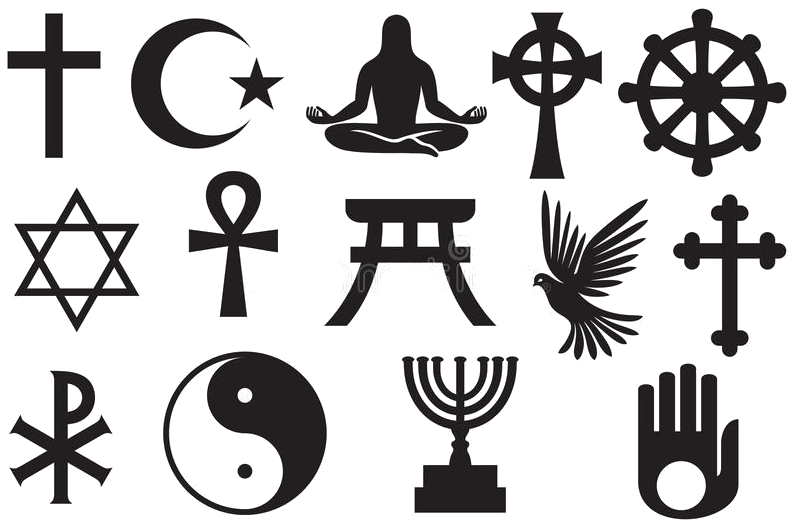 Religion
Religion
 Geschichte
Geschichte
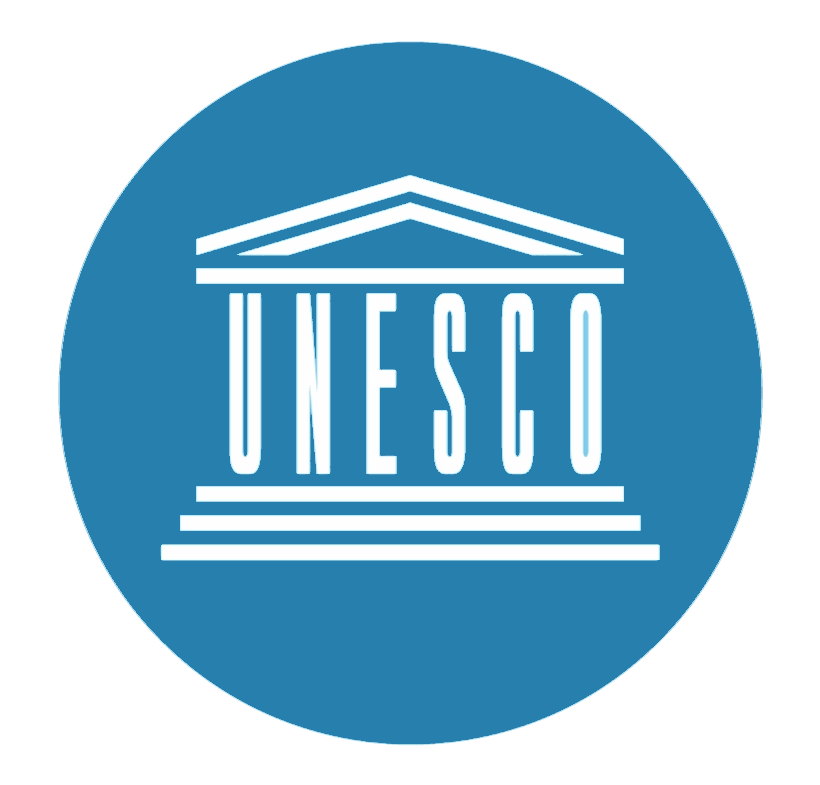 Weltkulturerbe
Weltkulturerbe
 Geographie
Geographie
 Internationale Städte
Internationale Städte
 Schiffe und Nautik
Schiffe und Nautik
 Kunst
Kunst
 Wirtschaft und Handel
Wirtschaft und Handel